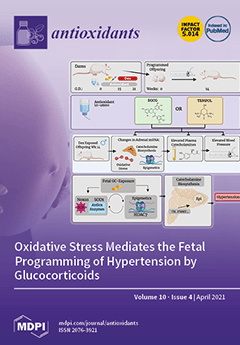Loss of ovarian function is closely related to estrogen (E
2) deficiency, which is responsible for increased osteoclast (OC) differentiation and activity. We aimed to investigate the action mechanism of E
2 to decrease bone resorption in OCs to protect from ovariectomy
[...] Read more.
Loss of ovarian function is closely related to estrogen (E
2) deficiency, which is responsible for increased osteoclast (OC) differentiation and activity. We aimed to investigate the action mechanism of E
2 to decrease bone resorption in OCs to protect from ovariectomy (OVX)-induced bone loss in mice. In vivo, tartrate-resistant acid phosphatase (TRAP) staining in femur and serum carboxy-terminal collagen crosslinks-1 (CTX-1) were analyzed upon E
2 injection after OVX in mice. In vitro, OCs were analyzed by TRAP staining, actin ring formation, carboxymethylation, determination of reactive oxygen species (ROS) level, and immunoprecipitation coupled with Western blot. In vivo and in vitro, E
2 decreased OC size more dramatically than OC number and Methyl-piperidino-pyrazole hydrate dihydrochloride (MPPD), an estrogen receptor alpha (ERα) antagonist, augmented the OC size. ERα was found in plasma membranes and E
2/ERα signaling affected receptor activator of nuclear factor κB ligand (RANKL)-induced actin ring formation by rapidly decreasing a proto-oncogene tyrosine-protein kinase, cellular sarcoma (c-Src) (Y416) phosphorylation in OCs. E
2 exposure decreased physical interactions between NADPH oxidase 1 (NOX1) and the oxidized form of c-Src homology 2 (SH2)-containing protein tyrosine phosphatase 2 (SHP2), leading to higher levels of reduced SHP2. ERα formed a complex with the reduced form of SHP2 and c-Src to decrease c-Src activation upon E
2 exposure, which blocked a signal for actin ring formation by decreased Vav guanine nucleotide exchange factor 3 (Vav3) (p–Y) and Ras-related C3 botulinum toxin substrate 1 (Rac1) (GTP) activation in OCs. E
2/ERα signals consistently inhibited bone resorption in vitro. In conclusion, our study suggests that E
2-binding to ERα forms a complex with SHP2/c-Src to attenuate c-Src activation that was induced upon RANKL stimulation in a non-genomic manner, resulting in an impaired actin ring formation and reducing bone resorption.
Full article






